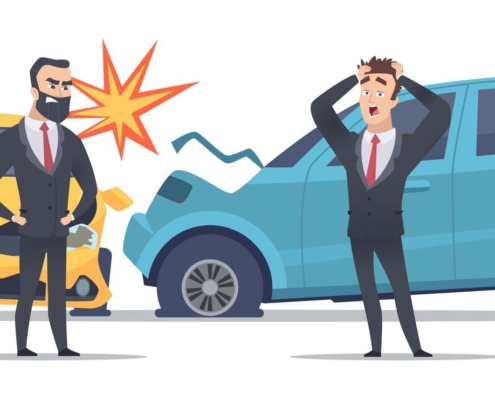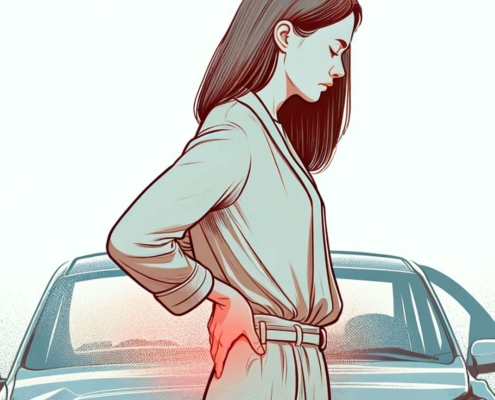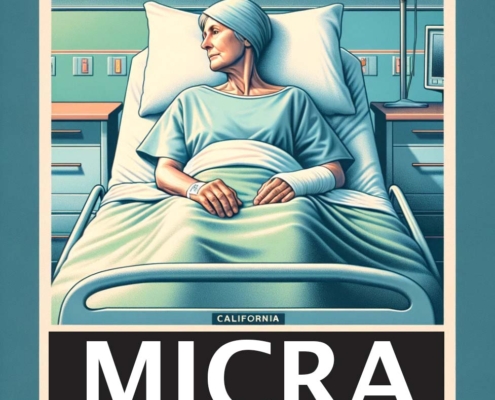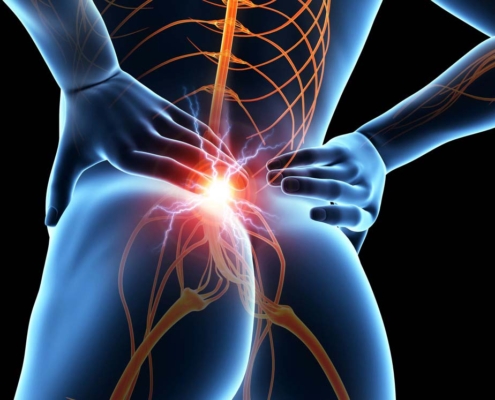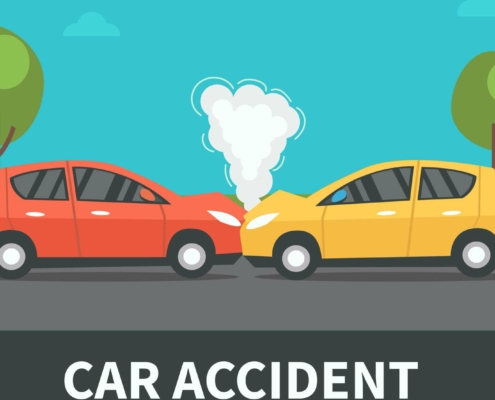Is California a No-Fault State for Car Accidents?
No, California is not a no-fault state for auto insurance in car accidents. The driver at fault for the car accident must pay for the other party’s car damage and injuries.
By Brad Nakase, Attorney
Email | Call (888) 600-8654
Get Smarter: Search my blogs
Is California a fault or no-fault state?
No, California is not a no-fault state for car insurance. The terms “fault” and “no-fault” refer to the way insurance claims and compensation are handled after a car accident. The main difference between the terms lies in determining who is responsible for the crash and who pays for the resulting damages. Since California is not a no-fault state, injured victims must file car accident claims with the at-fault driver’s insurance company.
In a fault state, such as California, the at-fault driver is responsible for the damages caused in an accident. This means that the motorist who is determined to be legally at fault for the collision is also responsible, or liable, for the resulting costs, including property damage, medical expenses, and other losses. The driver’s insurance company usually pays for these damages up to the policy limits.
The state of California follows a “comparative negligence” approach to determine fault. This means that liability can be assigned to multiple parties involved in an accident based on the degree of their negligence. For example, if the court determines that one driver is 70% at fault and the other is 30% at fault, the compensation will be adjusted accordingly. If you are partially at fault for an accident in California, your compensation may be reduced by the percentage of fault assigned to you.
On the other hand, in a no-fault state, each driver’s insurance company is responsible for paying their policyholders’ medical expenses and other accident-related costs, regardless of who caused the accident. This system aims to provide prompt compensation and avoid lengthy legal battles. However, it usually comes with limitations on filing lawsuits against the at-fault party for additional damages.
In California, being a fault state means that the insurance companies and legal system focus on determining who is at fault in an accident and hold that person responsible for the resulting damages. This often involves investigations, evidence collection, and negotiations between the involved parties and their insurance companies to establish fault and reach a fair settlement. It’s important to note that fault determination is a complex process, and it often requires the expertise of insurance adjusters, legal professionals, or even the courts to reach a final decision.
In this article, our accident attorney in San Diego discusses no fault accident as follows:
What is a no-fault accident?
Under a no-fault insurance system, each driver’s insurance company is responsible for covering their policyholder’s medical expenses and other accident-related costs, regardless of who caused the accident. This means that after an accident, each person involved would typically file a claim with their own insurance company to receive compensation for their losses.
The main purpose of a no-fault insurance system is to streamline the claims process and provide quick compensation to accident victims, regardless of who was at fault. It aims to reduce the need for lengthy legal battles and expedite the resolution of claims. It is important to note that the scope and specifics of no-fault insurance laws varies by state.
In states with no-fault insurance systems, there are often limitations on filing lawsuits against the at-fault party for additional damages. The focus is primarily on ensuring that individuals injured in car accidents receive necessary medical care and compensation promptly, without waiting for fault determination or a legal resolution.
How does a person file a car accident claim in California?
In California, as a fault state, if you are injured in a car accident, you generally have a few options for filing a claim to seek compensation for your injuries and damages. The following is a general overview of the claims process:
- Seek immediate medical attention: If you are injured, prioritize your health and well-being by seeking medical treatment as soon as possible. Ensure that you receive proper medical care and keep records of all medical bills, diagnoses, treatments, and any other relevant documentation related to your injuries.
- Report the accident: Contact the police and report the accident. It is essential to have an official record of the incident, which can be useful when filing an insurance claim.
- Exchange information: Gather the necessary information from all parties involved in the accident, including names, contact details, driver’s license numbers, insurance information, and vehicle details. Be sure to share your information as well.
- Notify your insurance company: Contact your own insurance company as soon as possible to report the accident and initiate the claims process. Provide them with all the relevant information and documentation related to the accident and your injuries.
- Determine liability: Insurance companies and adjusters will investigate the accident to determine who is at fault. This may involve collecting evidence, speaking with witnesses, assessing the damages, and evaluating the police report. Liability may be assigned to one or multiple parties based on the comparative negligence approach in California.
- Communicate with the other party’s insurance company: If the other driver was at fault, their insurance company may contact you to gather information and assess the damages. Be cautious when communicating with the other party’s insurance company, as they may try to minimize your claim. It is recommended that you consult with a personal injury attorney before providing detailed statements or accepting any settlement offers.
- Consult with a personal injury attorney: If you have suffered significant injuries or face challenges with the claims process, it is wise to speak with a personal injury lawyer. They can guide you through the legal complexities, protect your rights, negotiate with insurance companies on your behalf, and potentially pursue a lawsuit if necessary.
Remember that the specific process and requirements for filing a claim in California may vary depending on the circumstances of the accident and your personal insurance policy. When in doubt, speak with your insurer or a personal injury attorney who can provide guidance catered to your specific situation.
What is the difference between at-fault and no-fault insurance?
No-fault insurance and at-fault insurance are two different methods of handling car accident claims and compensating the parties involved. In a no-fault insurance system, each driver’s insurance company is responsible for covering their policyholder’s medical expenses and other accident-related costs, regardless of who caused the accident. This system aims to provide prompt compensation and reduce the need for lengthy legal battles. It also typically includes limitations on filing lawsuits against the at-fault party for additional damages.
By contrast, an at-fault insurance system, also known as a fault system, holds the driver who is legally responsible for causing the accident responsible for the resulting damages. The at-fault driver’s insurance company pays for the damages, including property damage, medical expenses, and other losses, up to their policy limits. This system often involves investigations, evidence collection, and negotiations to establish fault and reach a fair settlement. Comparative negligence rules may also be applied in at-fault systems to assign liability among multiple parties based on their degree of negligence.
What should you do after a car accident in California?
If you find yourself in a car accident in California, be sure to take the following important steps:
- Ensure safety and call for help: First and foremost, prioritize your safety and that of others. Check yourself and others involved in the accident for injuries. If there are serious injuries or hazards, call 911 to report the accident and request medical assistance.
- Move to a safe location: If possible, move your vehicle to a safe location, such as the side of the road, to prevent further accidents or obstructions. However, if there are injuries or it is otherwise unsafe to move the vehicles, it is best to leave them in place until help arrives.
- Exchange information: Gather information from all parties involved in the accident, including names, contact details, driver’s license numbers, insurance information, and vehicle details. Provide your own information to the other parties involved.
- Document the scene: Take photos or videos of the accident scene, including the vehicles involved, the damage sustained, and any relevant road conditions. These visual records can be useful for insurance claims and legal purposes.
- Report the accident: Contact the local police or California Highway Patrol (CHP) and report the accident. They will document the incident and create an official report. Provide them with accurate and detailed information about what happened.
- Notify your insurance company: Contact your own insurance company promptly to report the accident. Be sure to provide them with all the necessary information, including the other party’s details and the police report if available. You should then their instructions regarding the claims process.
- Seek medical attention: Even if you don’t believe you are seriously injured, it is crucial to seek medical attention after an accident. Some injuries may have delayed symptoms, and a medical evaluation can ensure your well-being and create a record of your injuries.
- Preserve evidence: Preserve any evidence related to the accident, including medical bills, repair estimates, and other relevant documentation. This evidence will support your claim and help determine the damages you’ve suffered.
- Consult with a personal injury attorney: If you have suffered significant injuries or face challenges with the claims process, consider consulting with a personal injury attorney. They can guide you through the legal aspects, protect your rights, and advocate for your best interests.
Every accident is unique, and circumstances may vary. It is important to use your judgment and prioritize your safety and well-being in any accident situation. If, in the aftermath of the accident, you are in doubt about the claims process, do not hesitate to contact a personal injury lawyer for advice and assistance.
Have a quick question? We answered nearly 2000 FAQs.
See all blogs: Business | Corporate | Employment Law
Most recent blogs:
Contact our attorney.




